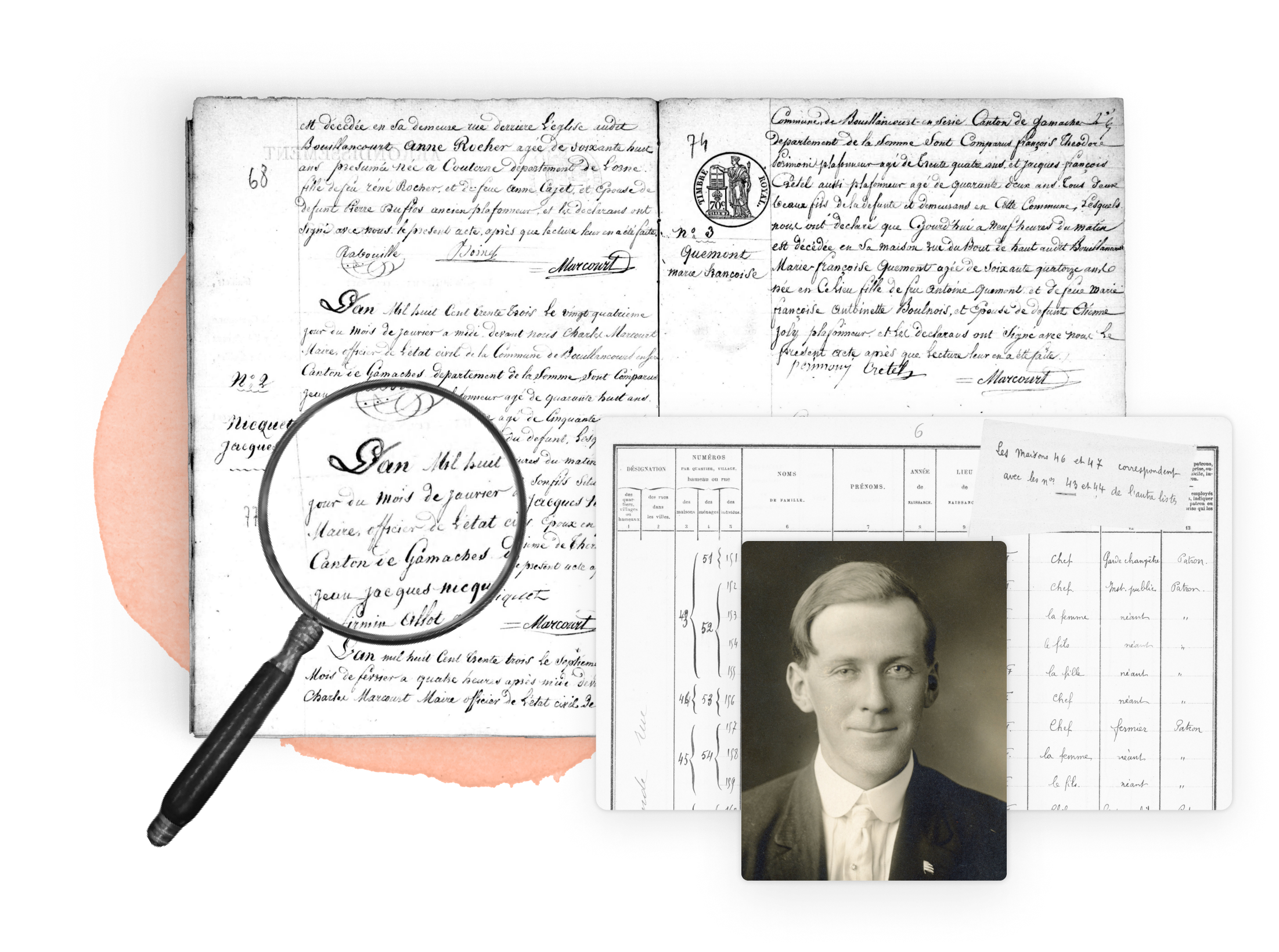
Burial records refer to records documenting a burial. Depending on the country and era, these records may be similar to what we think of as "cemetery records" and may be referred to as such.
"Burying Ground" was a term used before the nineteenth century to describe a place to bury. It was not until the nineteenth century that the term "cemetery" was used. Therefore, when researching an ancestor, depending on the time period, the records may be referred to as "burial records" or "cemetery records."
In addition, cemetery records are limited to information about burials at a specific cemetery. In contrast, "burial records" can include anything from a list of burials found at a cemetery or burial location to permits needed to bury a person or dispose of remains and transport bodies out of an area (depending on the time period). Burial permits are most likely twentieth-century records but may be found in the mid to latter nineteenth century. Unlike cemetery records, depending on the type of burial record, it may be created by funeral homes, a government entity, a church, or a cemetery.
Research your ancestors on MyHeritage
Genealogical information found on burial records
At the very least, burial records include the deceased's name and a date. However, they may include more, such as:
- Date of death
- Place of death
- Burial place
- The name of others buried in a plot or grave
- Next of kin
Burial records should be used in conjunction with other records that document death, such as a death certificate and an obituary.
Problems accessing burial records
One of the main issues when accessing burial records is that they may not exist. In the case of a listing of burials at a burying ground or cemetery, the cemetery may no longer be active, it may have been a small family cemetery with no records, or it may be abandoned. Records may no longer exist or may have never existed. In this case, it might be helpful to research newspapers for possible death notices or obituaries that can provide clues.
As mentioned previously, depending on the time period, the keyword you will want to use to search library and archive catalogs could be "burial" or "cemetery" records. Consider using both to conduct an exhaustive search.
Finding burial records

While death creates a lot of paperwork, the majority of the paperwork is not always available for genealogical research. Records like a burial permit might be found as a home source in cases where the family made alternative arrangements for cremains or burial. They may not be archived in a place accessible to researchers. However, it's not impossible to find such records.
Begin your search by asking family members about home sources they may have regarding an ancestor's death.
Consult genealogy websites for death records, including cemetery and burial records. It can be beneficial to consult various free and subscription websites to find what is available online.
Funeral homes may have records if you are researching the latter 19th or 20th centuries. Take some time to determine if the funeral homes that existed when your ancestor died still exist. Consulting city directories, telephone books, and historical newspapers can help identify funeral homes. Over time, family funeral homes have gone out of business or have been purchased and taken over by larger corporations. Because their records are private, they may or may not allow access, or they could have been destroyed.
Funeral home records may have been donated to an archive for the local area or region. Consult location-based archives such as a county or state archive's online catalog. ArchiveGrid can be searched for possible records. When using ArchiveGrid, use a keyword instead of your ancestor's name. A keyword could be the place they lived and the words "Funeral home" or "burial."
Cemetery records can be found online on both free and subscription genealogy websites, on the cemetery's websites, and in published indexes. In the case of cemeteries that no longer accept burials, consult cemetery transcription publications found on digitized book websites such as Internet Archive.
Explore more about burial records
- MyHeritage – Death, Burial, Cemetery & Obituaries
- Stories in a Stone — Cemetery Research, webinar by Gail Blankenau on Legacy Family Tree Webinars
- American Overseas Military Burials: Researching U.S. Soldier Ancestors Buried Abroad on MyHeritage, article by Mike Mansfield from the MyHeritage Knowledge Base
- Vital Records: How to Find Birth, Marriage & Death Records, article by Daniella Levy from the MyHeritage Knowledge Base


